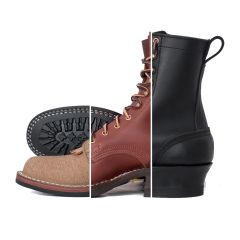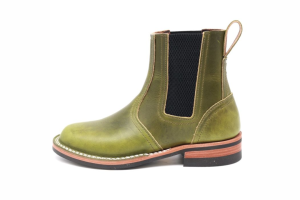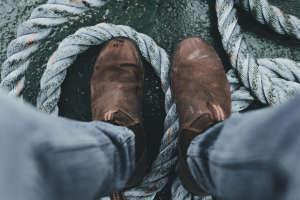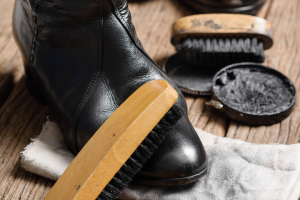What Are Combat Boots Good For? What Aren't They Good For?

Given their military origins, one might wonder what are combat boots good for outside of that role? What are combat boots good for, besides fighting in a war?
What aren't they good for?
A quality pair of combat boots, whether it's an old-school pair of leather combat boots or the modern tactical boot, is a good choice in practical footwear for most applications outside of certain trades that require more specialized footwear.
Loggers need to wear logging boots and firefighters need firefighting boots, after all. However, for almost everyone else, a good pair of combat boots makes a great choice of multi-use footwear.
Classic Combat Boots Were The Same As Other Boots
While today's combat boots are singularly identifiable as such, classic combat boots are really not too far removed at all from modern work boots or casual boots.
In fact, the combat boots worn during the first half of the 20th century weren't substantially different than the everyday boots people wore. There were some alterations of course, but in the broad strokes combat boots were barely any different from typical footwear.
The standard American combat boot up until 1943 was a 6-inch laced leather boot, not much different than many casual boots even of today. The sole was a composite material and the boot had a great balance of support but also flexibility.
Construction and materials were the same as typical boots. Besides the addition of caulked soles of the Pershing boot and the double buckle calf wraps of the M1943 boots, at least as far as American combat boots were concerned, there really wasn't any difference.
Combat Boots Enter Pop Culture
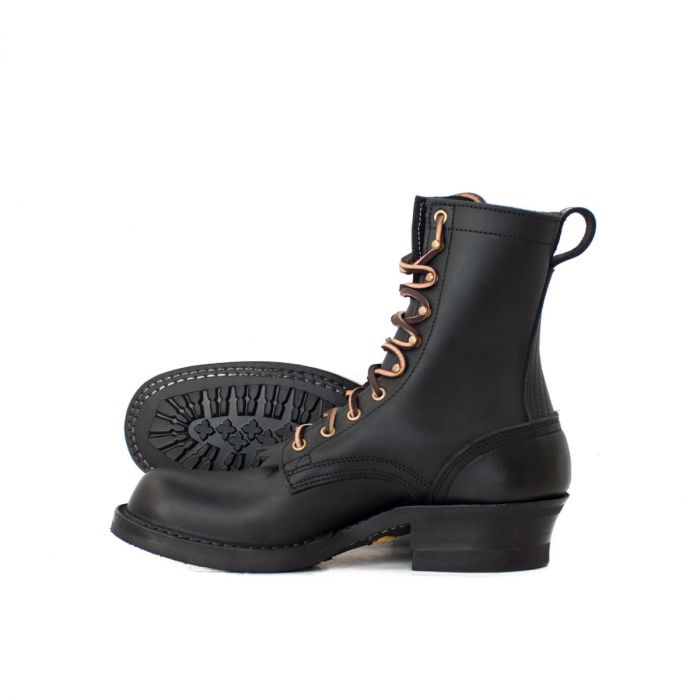
Of course, when a person sees the term "combat boots," what enters one's mind is a tall leather boot. This is the design that launched the Dr. Marten's brand and goes in and out of fashion periodically.
That classic leather combat boot design is actually a more specialized type of military footwear, specifically what are called "jump boots," which were made specifically for paratroopers. At that, the classic design are the famous Corcoran jump boots, named for the Corcoran and Matterhorn Company that made them.
Corcoran boots became the favored footwear of iconoclasts and punk rockers, but have also long been considered a serious value for money in terms of durable, practical footwear. Many police officers, foresters and postal workers have sworn by them for decades.
The boot was made with a specialized last developed by Dr. Edward Munson, a Lieutenant Colonel in the US Army Medical Corps, who noticed military footwear lacked support as well as room in the toe box and thus caused discomfort and injury.
A better fitting boot is better for the wearer? A revolutionary idea, indeed!
His shoe design improvements allowed more room for the forefoot to flex and move, and also helped the boot snug up in the ankle and heel as well and provide more arch support. The grain leather construction made them great field boots but also took a spit shine very well.
In other words, he developed a boot that was supportive, helped with shock absorbing, but also allowed the wearer the freedom of movement to get on with a dangerous job in greater comfort.
Doesn't sound terrifically different from quality modern work boots, does it?
The innovative and functional features of the Corcoran jump boot - boots that offered more support, more freedom of movement for the foot and more comfort - are now hallmarks of good working footwear.
Point being, a great pair of combat boots...is just a great pair of boots, period. It just so happens that they were and are used by the brave men and women of the armed forces.
What Are Combat Boots Good For?
Classic designs of combat boots - as well as quality examples of modern designs - still make excellent all-purpose boots, though they aren't suited to certain lines of work that - again - require more specialized footwear.
Let's say you wanted a pair of boots that are presentable enough for the office, but can take you over hills and trails and do some hard landscaping work in the yard over the weekend, but get cleaned and shined up for Monday's meeting.
A leather combat boot or boot of that style will do all of those things.
Or perhaps, along similar lines, you wanted a boot for all seasons. Light enough to be worn in the summer without too much discomfort, but rugged enough for winter. The same idea applies.
A great pair of casual boots can do it all. So really...what aren't combat boots good for?

